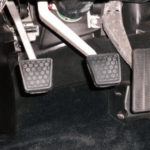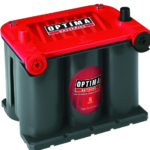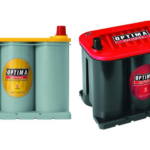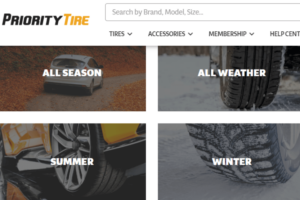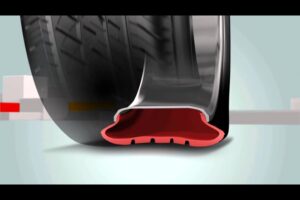Maintaining proper tire pressure is essential for ensuring vehicle safety and maximizing tire life.
When tire pressure is too low, it can lead to decreased fuel efficiency, poor handling, and increased risk of a blowout. One common tire pressure level that drivers may encounter is 28 psi.
While the recommended tire pressure for a vehicle can vary depending on the make and model, most passenger vehicles suggest a range between 28 and 36 psi.
Therefore, driving with tire pressure at 28 psi is not necessarily “bad,” but it is running a little low.
It is important to check the recommended tire pressure for your specific vehicle, which can typically be found in the operator manual or on a sticker located on the inside of the driver’s door post.
Understanding PSI and Tire Pressure
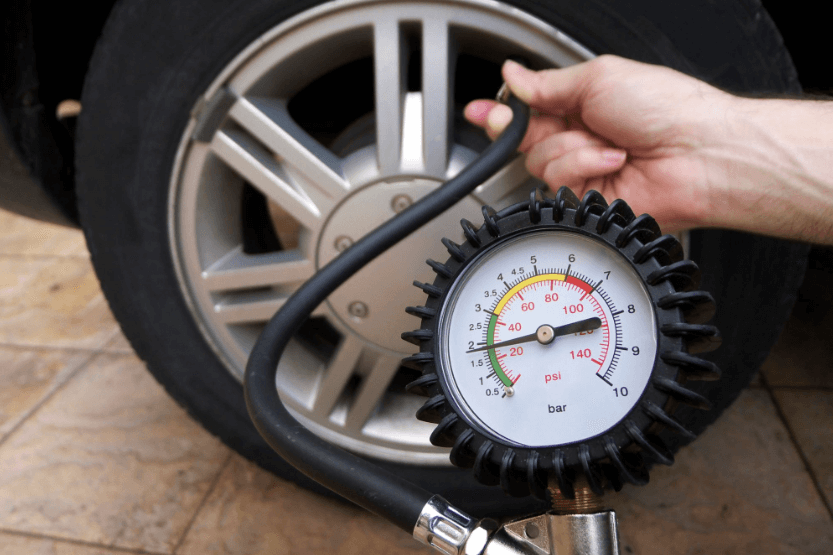
Maintaining the correct tire pressure is crucial for safe driving and optimal tire performance. Tire pressure is measured in pounds per square inch (PSI) or bar. Most vehicles have a recommended tire pressure of between 28 and 36 PSI, but it is important to check the owner’s manual or the sticker on the inside of the driver’s door to find the exact recommended pressure for your specific vehicle.
Driving with underinflated tires is not only dangerous, but it can also decrease fuel efficiency and tire lifespan. When tires are underinflated, they create more friction with the road, which can cause the tires to wear more quickly and increase the risk of a blowout. On the other hand, overinflated tires can lead to a harsher ride, decreased traction, and uneven tire wear.
It is important to check tire pressure regularly, at least once a month, and before long trips. Tire pressure should be checked when the tires are cold, as driving even a short distance can cause the tires to heat up and increase the pressure.
In addition to regular checks, it is also important to be aware of other factors that can affect tire pressure. Temperature changes can cause tire pressure to fluctuate, with a drop of 1 PSI for every 10-degree drop in temperature. Altitude changes can also affect tire pressure.
Tires can also naturally lose pressure over time through permeation, where air escapes from the solid rubber sidewall at a rate of roughly 1-2 PSI per month.
In summary, maintaining the correct tire pressure is essential for safe driving and optimal tire performance.
Drivers should check their tire pressure regularly, follow the recommended tire pressure for their specific vehicle, and be aware of other factors that can affect tire pressure. By taking these steps, drivers can help ensure a smooth and safe driving experience.
Importance of Correct Tire Pressure
Maintaining the correct tire pressure is crucial for safe driving, vehicle handling, and tire longevity. The recommended tire pressure can be found in the owner’s manual or on a sticker located on the driver’s side door jamb.
Driving with underinflated tires can negatively impact vehicle handling and increase rolling resistance, which can lead to decreased fuel economy. On the other hand, overinflated tires can result in decreased traction and uneven tire wear, leading to a shorter lifespan for the tires.
Proper tire pressure also helps to ensure that the tire tread wears evenly, which is important for maintaining good traction on the road. Uneven tire wear can lead to a decrease in traction and an increased risk of a blowout.
In addition to the safety concerns, maintaining the correct tire pressure can also save money in the long run. Properly inflated tires can improve fuel economy, leading to savings at the gas pump. It can also result in longer tire life, which means less frequent tire replacements.
Overall, maintaining the correct tire pressure is an important aspect of vehicle maintenance and safety. It is recommended to check tire pressure at least once a month and before long trips or when carrying heavy loads.
Is 28 Psi Too Low for a Tire?

Maintaining the correct tire pressure is crucial for safe driving. It not only ensures better fuel economy but also improves handling, braking, and overall performance of the vehicle. So, is 28 psi too low for a tire?
According to most tire manufacturers, the recommended tire pressure for passenger cars is between 32 to 35 psi. Therefore, 28 psi is considered too low for a tire. Driving with underinflated tires can cause several issues, including:
- Reduced fuel efficiency
- Uneven tire wear
- Poor handling and steering response
- Increased risk of blowouts
It’s worth noting that the tire pressure recommendation can vary depending on the make and model of the vehicle. Therefore, it’s always best to check the owner’s manual or the tire placard located on the driver’s side door jamb for the correct tire pressure.
If a driver notices that the tire pressure is consistently low, it’s essential to diagnose the cause of the problem. It could be due to a puncture, a damaged tire, or a leaky valve stem. Neglecting the issue can cause further damage to the tire and compromise the safety of the driver and passengers.
In conclusion, 28 psi is too low for a tire. Maintaining the correct tire pressure is crucial for safe driving and better vehicle performance. It’s always best to follow the manufacturer’s recommended tire pressure and check the tire pressure regularly to ensure optimal safety and performance.
Can I Drive My Car Smoothly on 28 Psi?
Driving on under-inflated tires can cause a number of problems, including decreased fuel economy, uneven tire wear, and even blowouts. So, can you drive your car smoothly on 28 psi? The answer is, it depends.
Most passenger cars recommend a tire pressure between 30 and 35 psi. Driving on a tire with a pressure of 28 psi is lower than the recommended level, but it’s not dangerously low. However, it’s important to note that driving on under-inflated tires can cause the tire to overheat and potentially fail.
If you’re driving on a tire with a pressure of 28 psi, you might notice that the car feels a little different than usual. The ride might feel a little bumpier, and the handling might not be as responsive. Additionally, driving on under-inflated tires can cause the tires to wear unevenly, which can lead to a shorter lifespan for the tires.
It’s important to check your tire pressure regularly to make sure that your tires are properly inflated. If you’re driving on a tire with a pressure of 28 psi, it’s a good idea to get it inflated back to the recommended level as soon as possible.
In summary, driving on a tire with a pressure of 28 psi is not recommended, but it’s not dangerously low either. While you can drive your car smoothly on 28 psi, it’s important to keep in mind the potential risks and to make sure that you’re regularly checking your tire pressure to ensure that your tires are properly inflated.
How to Determine the Right Tire Pressure

Determining the right tire pressure is crucial for maintaining a safe and comfortable driving experience. Incorrect tire pressure can lead to reduced fuel efficiency, poor handling, and even tire failure. Here are some tips on how to determine the right tire pressure for your vehicle.
Check the Owner’s Manual
The owner’s manual is a great place to start when determining the correct tire pressure for your vehicle. It will usually list the recommended pressures for your vehicle’s tires. The manual may also include other important information, such as the maximum pressure for your tires.
Check the Doorjamb
If you don’t have access to the owner’s manual, the doorjamb is another place to check for recommended tire pressures. Most vehicles have a placard located on the driver’s side doorjamb that lists the recommended psi for the front and rear tires.
Contact the Manufacturer
If you’re still unsure about the correct tire pressure for your vehicle, you can contact the manufacturer. They should be able to provide you with the recommended pressures for your specific make and model.
Check the Tire Manufacturer’s Website
Tire manufacturers often provide recommended tire pressure information on their websites. You can usually find this information by searching for your tire’s brand and model.
Use a Tire Pressure Gauge
Once you’ve determined the recommended tire pressure for your vehicle, it’s important to check your tire pressure regularly. You can do this using a tire pressure gauge. Simply remove the valve cap from your tire, press the gauge onto the valve stem, and read the pressure on the gauge.
Remember to always use the recommended tire pressure for your vehicle. Incorrect tire pressure can lead to reduced fuel efficiency, poor handling, and even tire failure. By following these tips, you can ensure that your tires are properly inflated and that you’re driving safely and comfortably.
To Summarize
In summary, a tire pressure of 28psi is within the recommended range for most vehicles. However, it is important to note that the recommended tire pressure can vary depending on the make and model of the vehicle. It is best to check the owner’s manual or the sticker on the inside of the driver’s door for the correct tire pressure.
Maintaining proper tire pressure is crucial for several reasons. Firstly, it ensures that the tires wear evenly, which can extend their lifespan. Secondly, it can improve fuel efficiency by reducing rolling resistance. Thirdly, it can improve handling and braking performance, which can enhance overall safety on the road.
It is also worth noting that tire pressure can fluctuate with changes in temperature. For every 10-degree Fahrenheit change in temperature, tire pressure can increase or decrease by 1psi. Therefore, it is important to check tire pressure regularly, especially during extreme weather conditions.
In conclusion, maintaining a tire pressure of 28psi can be a good starting point for most vehicles, but it is important to check the owner’s manual or the sticker on the inside of the driver’s door for the correct tire pressure. Regularly checking tire pressure and maintaining it within the recommended range can help improve tire lifespan, fuel efficiency, handling, and overall safety on the road.


